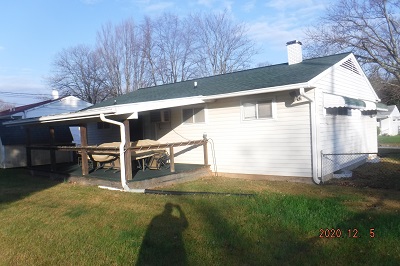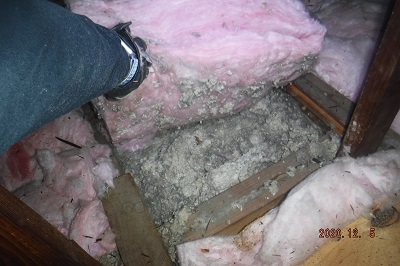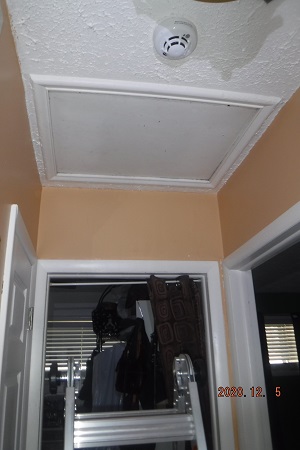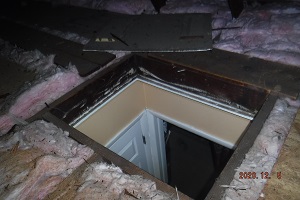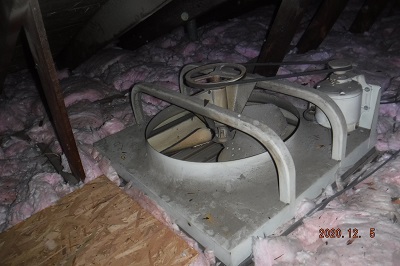Residential Comfort & Energy EfficiencyThursday, April 27 2023
Un-insulated Areas Play a Heavy Hand in Poor R-Values Now let's go a little deeper and explore the impact of un-insulated surfaces. It may surprise you how important having an even blanket of insulation is for getting a great result. If you notice any area in your attic that does not have insulation then pay attention to the information below! This typical Maryland attic is a great example of what the impact of missing insulation can have.
The attic area in the home pictured above is 975 square feet and flat (R-49 recommended in Maryland).
You will notice 1" of blown-in fiberglass insulation and 7" of rolled fiberglass batting laid on top. In this scenario, the attic has roughly 8" of insulation in "most" of the areas that need it. Later you will learn how to use the depth to determine the R-value. In this case, the attic is R-17... But, there is a catch! There are two major un-insulated areas in this attic (very common in Maryland attics). 1. A three-foot by three-foot push up hatch Equaling a total of 18 square feet of un-insulated area on the attic floor. This equates to just about 2% of the attic area (18 divided by 975).
The hatch from the attic has a plywood cover (seen in the background)
Whole house fan is seen from the attic. With the use of the HOME ENERGY SCORE CALCULATOR, we are able to calculate the impact un-insulated surfaces have on insulation performance. The picture gets clear! What ends up happening with this common scenario is not good. A mere 18 square feet of missing insulation has a big impact. The expected R-value reduces down from 17 to 13 for the entire attic! That translates to hot summer nights and cold winter drafts and high energy bills to pay. REASON: According to Dr. Allison Bailes of Energy Vanguard, the heat flows through the bare areas fast. Based on his article, the air leaves in the un-insulated ceiling area are as much as 38 times faster than in the insulated areas. ConclusionBe sure to measure your attic insulation in a precise fashion. Different areas that have different levels should be separate. Each area will get an R-value assessment. Along with knowing the condition, this weighted average calculator can then help you determine your attic's R-value.
|
Hometrust Remodeling
Proudly working in BGE & Pepco's Home Performance w/ ENERGY STAR program in Maryland to deliver whole-house energy savings to improve comfort & help protect the environment.
2025 Hometrust Remodeling | All Rights Reserved
An Energy Auditor's Purpose
"Energy auditors visit residential buildings and talk to owners and residents. They inspect, test, and measure to decide what energy-efficient retrofits are practical and cost-effective." Residential Energy







